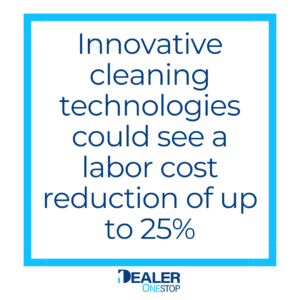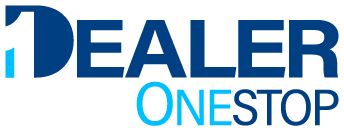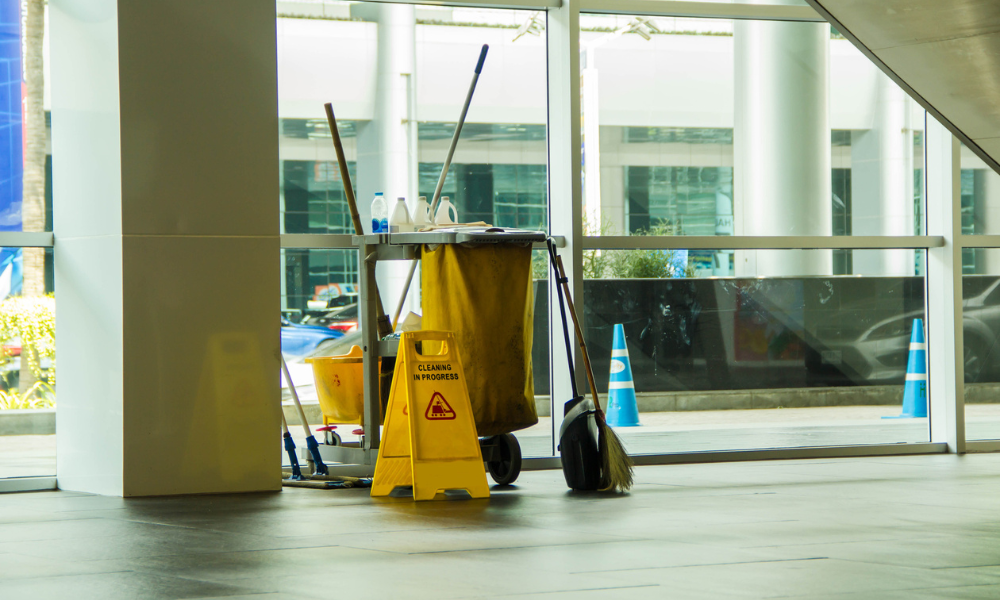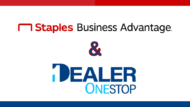Auto dealerships contend with many operational expenses, with janitorial and sanitation (Jan/San) services being a significant one. While keeping dealership locations pristine is non-negotiable, the associated costs can be needlessly excessive. Industry research indicates that auto retailers typically allocate around $30,000 annually for maintaining cleanliness through services like vacuuming and restroom maintenance. However, a closer look frequently reveals budgetary bloating borne of inefficiencies, and opportunities for auto dealer cost reduction.
Contractual Complacency: A Hidden Cost
Contractual oversight, or rather the lack thereof, represents a hidden torrent eroding the financial health of auto dealerships. Brite Way Maintenance’s study revealed a startling fact: an overwhelming 60% of cleaning contracts in the sector have stagnated without review for extensive periods. Consequently, dealerships are subject to outdated pricing, which is often not reflective of current market conditions or their own dynamic operational needs.
The complacency towards Jan/San agreements means missed opportunities for cost-saving renegotiations and efficiency gains. For example, recent industry analyses suggest that competitive market reviews could result in at least a 10-15% cost reduction in cleaning services. Regular contract assessments would ensure fair market rates and enable auto retailers to adapt service details to shifting needs, thus avoiding the financial drain from services that may no longer be necessary or could be more effectively managed.
Disparities in Cleanliness Requirements
The landscape of an auto dealership encompasses divisions with vastly differing cleanliness demands. Flat-rate Jan/San services are an impractical approach, given that a showroom’s requirements for sparkle and sheen differ substantially from the rugged needs of service areas. These distinctions necessitate a customized cleaning strategy that aligns with the specificities of each area, rather than a broad-stroke method that fails to recognize individual nuances.
Notably, with its high customer traffic and showcase vehicles, a showroom calls for frequent detailing, the cost of which may tally up. On the flip side, according to the National Auto Dealers Association, service areas that experience a higher volume of dirt and chemical spills can see up to 20% more spent on their cleaning. This clearly indicates that the one-size-fits-all approach is not only inefficient but also financially unsound. Ultimately, by tailoring Jan/San services to these varied spaces and their unique needs, dealerships can achieve a more cost-effective, yet equally thorough, standard of cleanliness.
The Underestimated Impact of Compliance Slippage
Beyond the direct costs of cleaning services, compliance slippage creates an unseen financial strain on auto dealerships. Regulatory standards, such as those mandated by OSHA, represent more than mere guidelines; they embody a fixed cost that, when ignored, invites penalties, reputational damage, and decreased customer trust. Health inspectors caution that seemingly inconsequential shortcuts, like forgoing regular mat replacements, can foster a ripple effect, setting the stage for more grave non-compliance repercussions and liability risks.
Recent surveys by industry compliance specialists highlight that nearly 40% of auto dealerships face fines due to non-compliance, which can escalate operation costs by up to 5%. This data underscores the need to adhere to health and safety protocols to avoid penalties and as a proactive step in risk management. In essence, comprehensive compliance is a surefire investment toward long-term financial stability. Dealerships that remain diligent about meeting these standards not only ensure their operational integrity but also cultivate a safer, more welcoming environment for both customers and employees.
Internal Audits: A Path to Saving
Internal audits emerge as a beacon of fiscal prudence for auto dealerships mired in the complexities of Jan/San expenses. Delving into the fine details of cleaning practices and expenses can unearth substantial inefficiencies. In fact, Auto Sanitation Experts disclosed that around 35% of activities carried out by Jan/San services were either redundant or could be scaled back without diminishing the dealership’s standards. This level of over-service not only inflates costs unnecessarily but also indicates opportunities for optimization.
Through these internal evaluations, dealerships have the potential to restructure their Jan/San strategies to better align with actual needs, circumventing wasteful expenditures. Additionally, internal audits can champion a culture of continuous improvement, propelling dealerships toward more sustainable practices. It’s a transformation that goes beyond cost savings, promoting an operational ethos that prioritizes both efficiency and environmental stewardship. Such audits trim the excess from the budget and support dealerships in maintaining an attractive and hygienic presentation to customers – a vital aspect of a thriving retail environment.
Adapting Jan/San Programs to Real Needs
Auto dealerships stand to significantly reduce their Jan/San expenditures by customizing their cleaning programs to the specific needs of distinct areas within their facilities. Custom-tailored sanitation services ensure that the meticulous requirements for maintaining a sparkling showroom and the more rugged demands for cleaning service areas are fulfilled appropriately. According to a recent dealership efficiency study, tailored Jan/San programs designed to meet specific area requirements have been linked to a reduction in costs by as much as 20%.
The need for adaptation is ongoing and requires a regular review of Jan/San program requirements, as a dealership’s operations evolve. This is particularly true as new car models may necessitate different display conditions or as shifts in seasonality can influence customer flow and operational intensity. Contracts that incorporate adjustable service levels enable scaling up or down as needed without harsh financial repercussions. With a strategy centered on adaptive service provision, dealerships can present their vehicles impeccably and maintain rigorous cleanliness in service areas, all while managing expenses to reflect actual utilization, thereby ensuring a cost-effective operation.
Streamlining Through Technology and Training
 Embracing modern technology is paramount for streamlining Jan/San efforts effectively. With advanced cleaning equipment, such as automated floor cleaners and eco-friendly product dispensers, dealerships can reduce manual labor hours and increase overall efficiency. For context, a tech industry report from 2023 highlighted that auto dealerships integrating innovative cleaning technologies could see a labor cost reduction of up to 25%, a significant margin that underscores the benefits of technological adoption.
Embracing modern technology is paramount for streamlining Jan/San efforts effectively. With advanced cleaning equipment, such as automated floor cleaners and eco-friendly product dispensers, dealerships can reduce manual labor hours and increase overall efficiency. For context, a tech industry report from 2023 highlighted that auto dealerships integrating innovative cleaning technologies could see a labor cost reduction of up to 25%, a significant margin that underscores the benefits of technological adoption.
Investing in training for Jan/San personnel is equally crucial. A well-trained staff, capable of operating new technologies and versed in the latest efficient cleaning techniques, can drastically reduce the time spent on tasks while improving the quality of work. As part of the training, fostering an understanding of the unique requirements across different dealership areas ensures that staff can adapt their methods accordingly, ensuring no resource is wasted, and standards are uniformly upheld. This combination of high-tech tools and skilled labor is the twin-engine driving cost-efficiency in modern dealership maintenance.
The Convenience of One-Stop Shopping
Consolidating purchases through a single supplier, like Dealer One Stop, can streamline auto dealer janitorial supplies procurement process immensely. Think of it as auto dealer cost reduction with a unified source, dealerships simplify ordering, which in turn saves valuable time. This centralized approach minimizes the complexity that often comes with tracking multiple orders from various vendors.
Moreover, purchasing through one trusted supplier often leads to substantial cost savings. Dealer One Stop offers the advantage of negotiated prices and reduces administrative overhead. This coordinated sourcing strategy also reduces the likelihood of emergency, last-minute purchases, which typically carry premium prices. In consolidating their purchasing, dealerships find both convenience and a bottom-line benefit.
Driving Toward Leaner Operations
In conclusion, auto dealerships have a clear route to curbing superfluous Jan/San expenses while upholding impeccable cleanliness standards. By eschewing one-size-fits-all contracts and focusing on need-specific services, they can achieve targeted cleanliness at a fraction of the cost. On top of that, embracing the convenience and savings offered by single-source providers like Dealer One Stop streamlines the process, carving out a path of efficiency resulting in auto dealer cost reduction straight to the bottom line,
Effective Jan/San management is about striking a balance between operational necessity and financial thriftiness. Dealerships that re-evaluate their contracts, enforce compliance, and adapt to evolving cleaning needs shine in presentation and operational prudence. Embracing technological advancements and investing in employee training serve as the finishing touches on a strategy that secures a dealership’s profitability as much as its spotlessness.
CLICK HERE to get the full 10 Auto Dealership Blind Spots Causing Profit Leaks Report.








